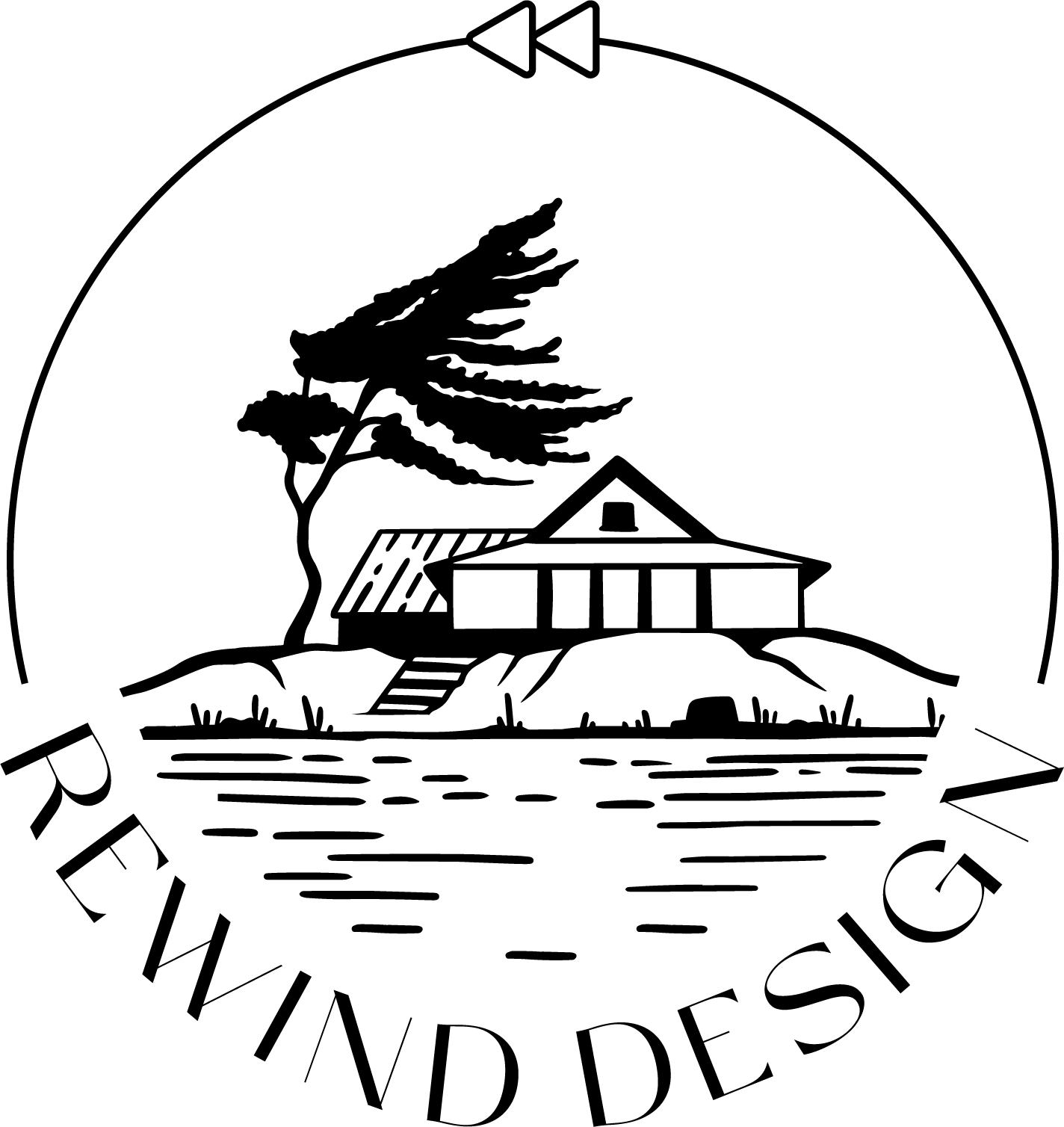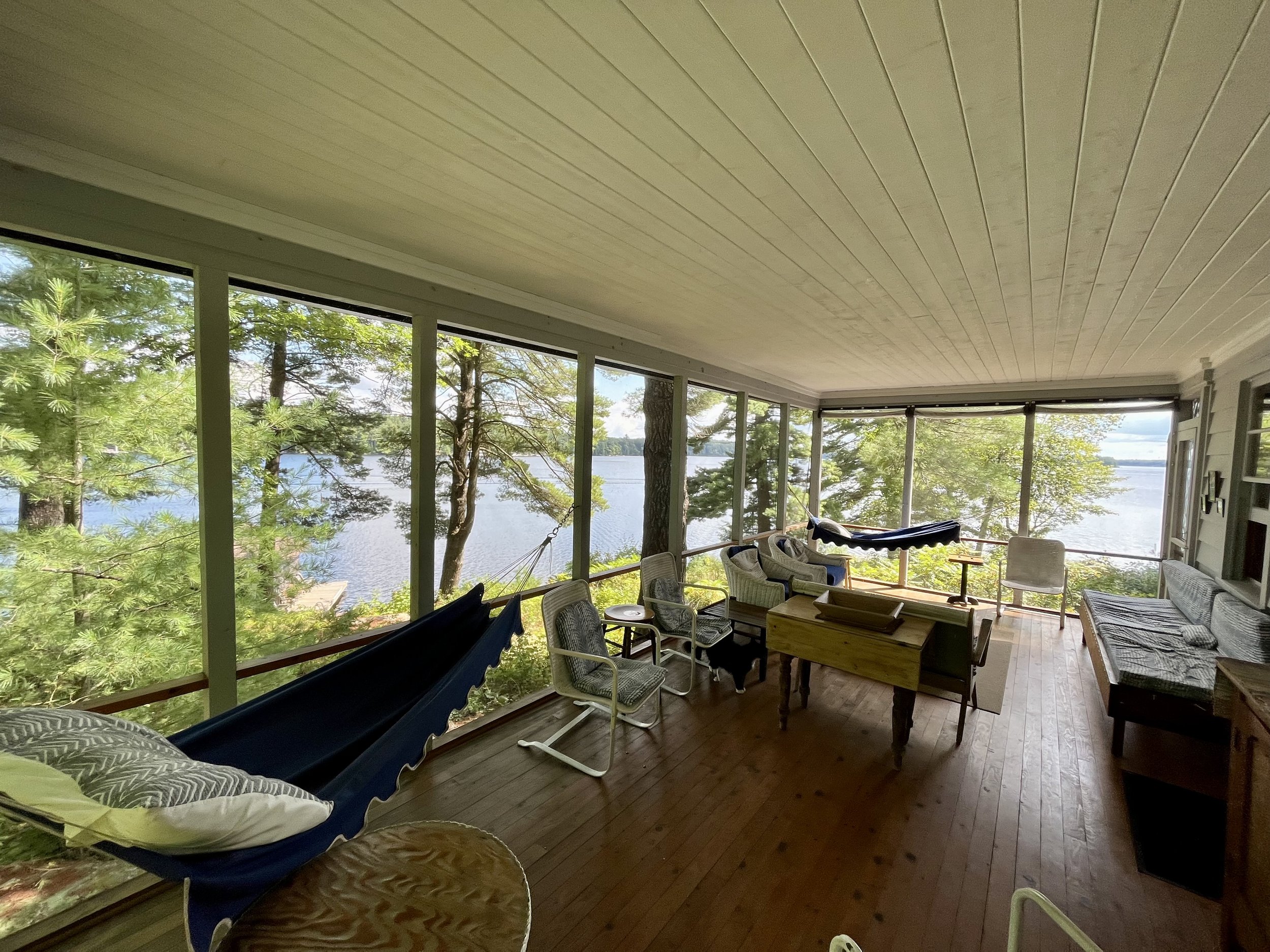S1 | Rewind Design | E9 Bonnie on Bannockburn Road
Bonnie on Bannockburn Rd
A 100 year history on Lake Muskoka
Rewind Design - Episode 1 - Bonnie on Beautiful Bannockburn Road
Welcome to the first ever Rewind Design episode featuring a Muskoka cottager! I had the utmost pleasure of sitting down and speaking with a wonderful woman, Bonnie Bean and her daughter, in their generational family cottage on Lake Muskoka. Bonnie was so open to speaking about her family’s past, their journey to Muskoka and the initial challenges of owning a cottage in the early 1900s. Bonnie has been coming up to Muskoka from Toronto with her family for 82 years, ever since she was born. Her family has owned a piece of property just 4 miles north of Bala on Lake Muskoka for over 100 years. The property has since gone through some changes, as is bound to happen over 100 years, yet Bonnie is still cottaging as strong as ever! Even at 82 years young! The original lot was purchased by her grandfather in 1915, and was a rough and rocky property to develop. It took 2 years to build the cottage, with no access to electricity, and rough landscape conditions.
Bonnie’s grandmother would bring all 6 children, luggage in tow, up to the cottage in late June, and they would stay until Labour day weekend. The drive was very long on dirt roads, before highway 400 is what it is today. With cranking cars, no gas stations and many flat tires it was a long and grueling trip, often taking multiple days! Bonnie’s grandparents initially thought that keeping the kids out of the city would help with their overall health, as polio outbreaks were starting to emerge in cities at that time. I still believe this to be true! History repeats itself, and in 2020 when COVID first hit, there was a rush of people clambering to be up north and away from the hustle and bustle of the cities!
To supply the cottage with food, metal vats of lard, flour and sugar were bought from Eatons, delivered by steamship to a large warf just down their road. Bonnie’s daughter says that Eatons was just like Amazon is nowadays, they sold everything and anything and had a monopoly on the area. They sold boats, canoes, appliances and everything else under the sun! You would choose what you wanted in their large catalogue and it would be delivered to your cottage via steamship. The cottage had a wood stove for cooking, no electricity and no pumped water, they had to scramble down the rocky terrain to collect pails of water down at the lake. For fresh vegetables, they would travel down the road and visit local farmers with incredible fresh produce. For fruit, the children would carry metal pails around the property to collect blueberries. (something I enjoy doing today!) To keep everything fresh, ice was cut out of the lake in the spring, stored and brought to the ice box in the cottage. To get around, Bonnie remembers using a 5 horsepower wooden outboard boat to travel into town, as a child in the early 50’s.
The view from Bonnie’s Cottage
Later down the line, the original property was divided into 6 lots, for 6 children, and was awarded to each child by lottery. 3 of the children built cottages, 3 did not. Bonnie’s aunt built the cottage that she now owns today when she bought her aunt’s cottage in 1974. Bonnie’s property is 1/6th of the original lot owned by her grandfather. The cottage Bonnie now vacations to was built in 1951 by a local builder, Burt Bowesfield from Bala. A builder named Rushorn built her mother’s adjacent cottage! Bonnie’s mom was living independently in the cottage until old age 95. Prior to buying from her aunt, she had been staying with her mother, in the property next door (built in 1948). Her grandmother’s original cottage unfortunately burnt down on labour day weekend in 1944. Bonnie describes how her Aunt was closing up to go home on labour day and had thrown some paper in the wood fire before leaving, it was a very hot and dry weekend. Later that day a neighbour called them to say they were so sorry, but the cottage was up in flames with no signs of stopping.
Cottage Description
Bonnie’s favourite spot in the cottage! The screened in porch!
The cottage on Bannockburn Rd, in the Muskoka Lakes district, is nestled in the trees, perched on the rocks with an elevated view southeast towards Muskoka Lake’s Acton Island. The view across 330 linear feet of frontage provides ample privacy and the feeling of being secluded. The drive down the private road is lined with maples + pines trees, with their canopies enclosing the top of the road, as if you are going through a tunnel of leaves. The cottage is a 4 bedroom, one story building with the most beautiful and welcoming atmosphere. When I met Bonnie at her cottage for the first time, she welcomed me as if I was family coming to stay for a long weekend. We sat in Bonnie’s living room for our interview, in front of the wood burning fire, sipping tea and chatting with her daughter Mary. Enclosing the room are rich pine ceilings and walls with large windows facing the water. The rain was lightly falling, as we chatted, seemingly endlessly about the rich history of Muskoka. Bonnie’s most treasured part of the cottage is a large screened in porch with a 3 sided view, where she spends most of her time, reading, napping or sipping on a gin cocktail! The cottage is sprinkled with family history, with photos of Bonnie's mother and aunts enjoying the cottage in the early days.
She talks passionately about her time spent at the property as a child, with cousins. The point was a place of community, aunt’s, uncles, cousins where the children were free to roam. Her parents would have cocktail parties with all the family and surrounding neighbours.
Bala History
To dive a little bit deeper into the history of the area, Bonnie spoke a lot about the town of Bala. Bala was settled in 1868 by Thomas Burgess, who developed a sawmill and a general store to serve the local area. The town was not suitable for farming or logging, due to the rocky topography, so railway connections helped to establish the town as a tourist location with many summer resorts. Bala became a massive hub, where steamship passengers connected through to steam ships such as R.M.S. Segwun, Cherokee and Islander. Many more steamers sailed across the muskoka lakes, transporting passengers to their final cottage destinations. Roads and trains became increasingly more popular, and the steamship connection trickled off. However, more and more people have been coming up north to experience and enjoy the true wonder and beauty of what is now coined “Cottage Country”
Growing up in the 50’s, Bonnie would often go to what was called “Dunn’s Pavilion” (what is now known as “The Kee to Bala”). Gerry Dunn created this venue where big bands of the era would play every weekend and people would dance the night away - in fact, Bonnie’s parents met there on just such a summer weekend in 1937. The store sold ice cream, had a soda bar and lots of knick knacks. Bonnie fondly remembers going to Dunn’s on family nights where children were invited to dance with their uncles and aunts and everyone had a wonderful dancing time! At this time, Bala was a huge hub and would draw large crowds to the festivities. Over the 50’s, 60’s, 70’s, 80’s and 90’s this dancing continued - and it was not just for seasonal cottagers. There was a repetitive vibe, where people would plan to attend every weekend, and locals would enjoy those shows too. There was also a booming ski show business in the 70’s - 80’s which also drew in a big crowd, and Bonnie remembers they would go as often as they could. Burgesses had a large drygood store and was the main centre for shopping, Bala was a huge hub! No one would drive to Bracebridge as they do nowadays. Fathers would come up every Friday to meet their kids and wives for the beautiful weekends!
Thank you so much again to Bonnie and Mary for participating in this episode of Rewind Design with Katy McNabb
If you would like to support this podcast, please follow along to patreon.com/rewinddesign. If you would like to support the show in other ways or share your own story, please send an email to katy@rewinddesign.ca or give me a call at 416 822 7489. Your donations help to run the podcast and costs associated with recording equipment and travel. 10% of all donations will be donated to the Georgian Bay Land Trust. Thank you so much, your support means everything.






















